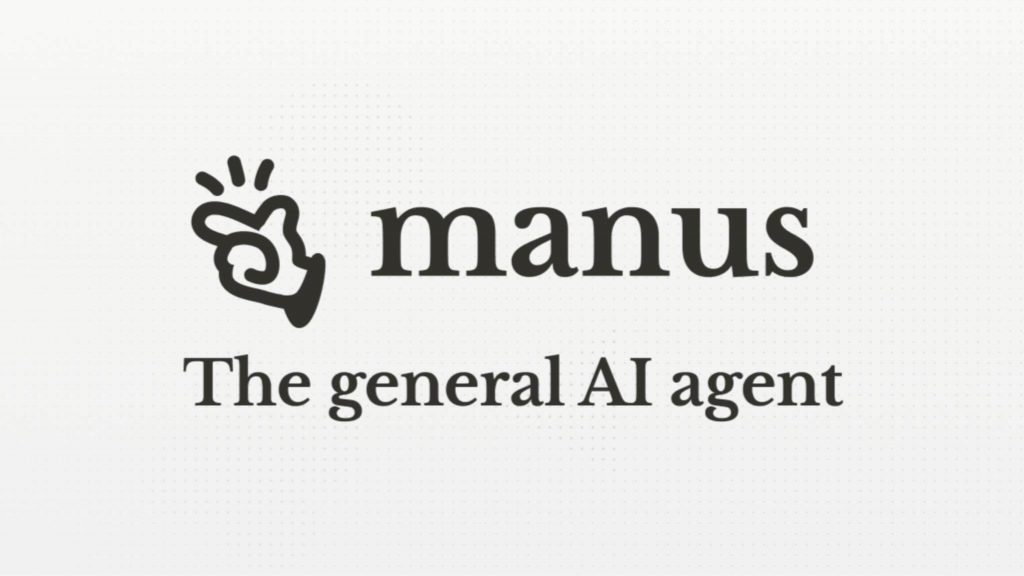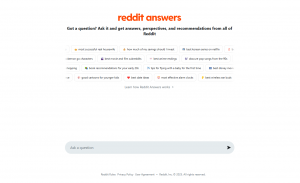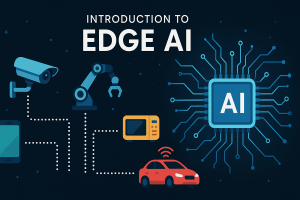
Yet another breakthrough has arrived to push the boundaries of AI: Manus AI. Launched in March 2025 by the innovative startup Monica, also known as Butterfly Effect, Manus AI is hailed as the first fully autonomous AI system. Unlike previous models, it can plan, execute, and refine tasks independently, eliminating the need for continuous human input.
The idea of AI autonomy has long intrigued researchers, but most models—like ChatGPT and Google’s Gemini—still depend on user prompts and guidance. Manus AI marks a leap forward by integrating multiple specialized models, allowing it to tackle complex tasks across industries, from finance and education to research and personal productivity.
As Manus AI captures global attention, it’s crucial to explore its capabilities, impact, and challenges. This article provides a deep dive into its architecture, features, and real-world applications while addressing potential concerns. By understanding its evolution, we can better grasp its role in shaping the future of AI and its implications for businesses and individuals alike.
What is Manus AI?

Manus AI is a revolutionary autonomous artificial intelligence agent developed by the Chinese startup Monica, also known as Butterfly Effect. The name “Manus,” derived from the Latin word for “hand,” reflects its core purpose: to act as a digital assistant capable of handling tasks from conception to execution. Unlike traditional AI systems that require user input at every step, Manus can autonomously plan, execute, and refine tasks, delivering complete results without constant supervision.
It was officially unveiled on March 6, 2025, and has since gained significant attention in the global AI community. Its creators designed it to go beyond the capabilities of conventional large language models (LLMs) by integrating a multi-agent architecture. This architecture allows Manus to break down complex tasks into manageable subtasks, execute them asynchronously, and refine outputs based on real-time feedback. Since its launch, Manus has been lauded as a potential game-changer in the field of artificial intelligence.
Naturally, comparisons are inevitable. One of the most notable is between Manus AI and OpenAI’s Deep Research, another advanced system designed for complex task execution. However, several key differences set them apart:
- Autonomy and Task Execution: Manus AI is built for minimal human intervention, autonomously managing workflows from start to finish. It employs a multi-agent system where specialized sub-agents collaborate under an executive agent’s supervision. In contrast, OpenAI’s Deep Research requires more user guidance and is less focused on full autonomy.
- Benchmark Performance: Manus AI has demonstrated superior multi-step task execution, reflected in its higher GAIA (General AI Autonomy Assessment) scores compared to Deep Research. These scores highlight its ability to handle complex workflows with greater efficiency.
- Accessibility: Manus AI is currently free during its beta phase, making it widely accessible to individuals and small businesses. Deep Research, however, follows a subscription-based model geared toward enterprise users, restricting accessibility to larger organizations.
- Use-Case Distinctions: Manus AI is designed to democratize access to advanced AI tools, benefiting users across finance, education, and personal productivity. Deep Research, on the other hand, primarily serves enterprise-level applications, emphasizing scalability and corporate integration.
By blending advanced autonomy with accessibility, Manus AI positions itself as a transformative force in the AI landscape. Its focus on empowering everyday users gives it a unique edge in the race toward fully autonomous AI systems.
The Workings of the First Fully Autonomous AI System

Autonomy in artificial intelligence refers to an AI system’s ability to independently plan, execute, and refine tasks without requiring continuous human input. Manus AI embodies this concept by functioning as a fully autonomous agent, capable of breaking down complex workflows into smaller tasks, executing them asynchronously, and iterating on the results until the desired outcome is achieved. Unlike traditional AI systems that rely on user prompts at every step, Manus operates with minimal intervention, delivering complete and actionable results.
This autonomy is made possible by its multi-agent architecture, which simulates human-like problem-solving methods. Each task is handled by specialized sub-agents—such as planning agents, execution agents, and verification agents—that collaborate seamlessly within a controlled environment. This allows it to mimic how humans approach multifaceted problems: by analyzing the situation, selecting the right tools, performing actions, and refining outputs based on feedback.
Key Components of Manus AI
Here are the key components of its core architecture:
- Linux Sandbox Environment for Secure Operations
Manus operates within isolated virtual computing environments, ensuring that each task runs securely without interference from others. This sandboxing mechanism allows Manus to execute shell commands, manage files, and interact with external tools while mitigating risks such as unauthorized access or system compromise.
- Integration of Multiple Sub-Agents Specialized in Different Tasks
Manus employs a suite of specialized sub-agents, each dedicated to specific aspects of task completion. For example:
- Planning agents analyze user requests and break them into subtasks.
- Execution agents perform actions such as data processing, coding, or web automation.
- Verification agents ensure the accuracy and quality of outputs before submission.
These agents collaborate asynchronously, enabling Manus to handle complex workflows efficiently.
- Use of Existing Large Language Models like Claude and Qwen
Manus leverages powerful foundation models such as Claude (Anthropic) and Qwen (Alibaba) to enhance its reasoning and problem-solving capabilities. By dynamically invoking these models, Manus can tailor its approach based on the nature of the task—for example, using Claude for logical reasoning and Qwen for knowledge retrieval.
7-Step Process of Manus AI
When it comes to task execution, Manus AI follows a structured, autonomous process designed for adaptability and precision. Here’s a step-by-step breakdown of how it operates:
- Analyze Events
Manus begins by analyzing the user’s request and the current state of the task. It processes an event stream that includes user input, execution results, and contextual information to understand the scope and requirements.
- Select Tools
Based on its analysis, Manus selects the most appropriate tools or APIs for the next step. For instance: It might use a web browser for research, or it could opt for Python scripts to automate calculations or data analysis.
Execute Commands
The selected actions are executed within a secure sandbox environment. Manus can run shell scripts, automate web interactions, or deploy applications without compromising security.
1. Iterate
Manus refines its approach based on new data generated during execution. It repeats the cycle of analyzing events, selecting tools, and executing commands until the task is fully completed. This iterative process ensures optimization and adaptability.
2. Submit Results
Once the task is complete, Manus delivers results in a format tailored to the user’s needs. Outputs may include:
- Detailed reports.
- Interactive dashboards.
- Fully deployed applications hosted on public URLs.
3. Deployment Capabilities
One of Manus’ standout features is its ability to deploy applications or websites directly to public URLs. For example, it can generate an interactive dashboard summarizing stock trends or create a web-based tool for resume screening—all without requiring manual intervention.
5. Enter Standby Mode
After submitting results, Manus enters an idle state where it conserves resources while waiting for new tasks or user input.
This combination of advanced architecture and structured execution makes Manus AI a groundbreaking autonomous system capable of handling complex workflows end-to-end with minimal human intervention. Its ability to integrate powerful models, execute secure operations, and deliver actionable results positions it as a transformative tool in artificial intelligence development.
The Key Capabilities of Manus AI

Manus AI is built to deliver advanced automation, robust security, and cross-industry versatility, making it a powerful tool for both personal and professional use.
- Task Automation
Manus AI streamlines a variety of tasks, boosting productivity and efficiency:
- Information Retrieval & Fact-Checking – Quickly gathers and verifies data from multiple sources, ensuring accuracy for research and analysis.
- Data Processing & Visualization – Handles large datasets, generating interactive dashboards, charts, and graphs for better insights.
- Web Automation – Automates tasks like form-filling, web scraping, and JavaScript execution, reducing manual effort in data extraction and web interactions.
- Security Features
Manus AI prioritizes security to protect user data and ensure safe operations:
- Session Isolation – Each task runs in a separate environment, preventing data cross-contamination and ensuring privacy.
- Sandbox Restrictions – Operates within a controlled environment, limiting access to system resources and mitigating security risks.
- Versatility Across Domains
Manus AI adapts to various industries, offering specialized solutions:
- Finance – Assists in stock analysis, financial modeling, and portfolio management by automating trend analysis and report generation.
- Education – Creates custom learning materials, automates grading, and analyzes student performance to support educators.
- Research – Enhances research workflows by conducting supplier comparisons, data mining, and literature reviews with speed and accuracy.
By integrating these capabilities, Manus AI empowers users to automate complex workflows, enhance decision-making, and drive innovation across industries.
Early Challenges and Criticisms for Manus AI

Despite its groundbreaking capabilities, Manus AI faces several challenges and criticisms that impact its adoption and perception. These concerns highlight areas where Manus needs improvement and underscore the ongoing debate about its potential impact.
- Early Glitches
During its initial demonstrations, Manus AI encountered several technical issues that raised concerns about its reliability:
- Looping Errors – Some users reported instances where Manus entered infinite loops, failing to complete tasks due to repetitive actions. This was often attributed to incomplete or ambiguous user prompts, which the system struggled to resolve.
- Inconsistent Performance – There were reports of inconsistent performance across different tasks. For example, Manus might excel in data analysis but struggle with web automation tasks, leading to mixed results and user frustration.
These early glitches underscore the need for further refinement and testing to ensure consistent performance across various scenarios.
- Privacy Concerns
One of the significant criticisms of Manus AI is related to data privacy risks associated with its autonomous decision-making capabilities:
- Data Collection and Use – Manus collects and processes large amounts of data to execute tasks autonomously. This raises concerns about how user data is stored, accessed, and potentially shared. Critics argue that without robust privacy controls, sensitive information could be compromised.
- Autonomous Decision-Making – The ability of Manus to make decisions independently raises questions about accountability and transparency. Users might not fully understand how Manus arrives at certain conclusions or actions, which can lead to mistrust.
Addressing these privacy concerns is crucial for building trust among users and ensuring that Manus operates within ethical boundaries.
- Overhype vs Reality
There is an ongoing debate about whether Manus AI truly represents a revolutionary leap forward in AI technology or if it is overhyped:
- Expectations vs. Capabilities – Some critics argue that Manus’ capabilities, while impressive, do not fully meet the expectations set by its marketing and media coverage. They point out that while Manus can automate complex tasks, it still requires significant setup and user input to function optimally.
- Comparison to Other AI Systems – Others argue that Manus’ autonomy and multi-agent architecture are genuinely innovative, setting it apart from other AI systems like OpenAI’s Deep Research. However, the extent to which Manus surpasses these systems in real-world applications remains a topic of discussion.
This debate highlights the need for a balanced assessment of Manus AI’s capabilities and limitations. As it continues to evolve, addressing these criticisms will be essential for realizing its full potential and meeting user expectations.
The Potential Impact of Manus AI on the AI Industry

Manus AI is poised to significantly impact the AI industry with its groundbreaking autonomy, setting a new standard for what AI systems can achieve. As one of the first fully autonomous AI agents, it challenges traditional models by independently planning, executing, and refining tasks without continuous human input.
- Democratization of AI: Manus’ free availability during its beta phase democratizes access to advanced AI tools, empowering small businesses, researchers, and individuals who previously lacked access. This accelerates AI adoption across diverse sectors, fostering innovation at all levels.
- Industry Competition: Manus’ emergence is reshaping competitive dynamics within the AI industry. Its superior performance on benchmarks like GAIA has sparked concerns among Western companies about falling behind China’s advancements in autonomous agent technology. This prompts reevaluations of strategies to compete with China’s rapid progress.
- Ethical and Regulatory Challenges: While Manus offers exciting possibilities, it also raises important ethical and regulatory questions. Privacy concerns and accountability in autonomous decision-making are prompting discussions about regulatory frameworks for such systems.
Overall, Manus AI is driving the evolution of artificial intelligence by setting new standards for autonomy and accessibility, while sparking competition and ethical discussions that will shape the future of the AI industry.
AI Leaps into Full Autonomy

Manus AI marks a significant step toward fully autonomous artificial intelligence, demonstrating a system capable of independently managing complex tasks. By integrating multiple specialized models and operating within secure sandbox environments, it delivers actionable results with minimal human intervention, positioning itself as a transformative force in the AI landscape.
Despite challenges such as early technical glitches, privacy concerns, and ethical considerations, its potential to democratize access to advanced AI tools and reshape industries is undeniable. As AI continues to evolve, Manus AI is poised to set new benchmarks for autonomy, accessibility, and innovation.
Its true impact, however, will be determined by its ability to balance technological advancement with ethical responsibility and user trust. As developers and policymakers address these challenges, Manus stands as both a testament to AI’s rapid progress and a glimpse into the future of autonomous systems.




